Address
304 North Cardinal
St. Dorchester Center, MA 02124
Work Hours
Monday to Friday: 7AM - 7PM
Weekend: 10AM - 5PM
Address
304 North Cardinal
St. Dorchester Center, MA 02124
Work Hours
Monday to Friday: 7AM - 7PM
Weekend: 10AM - 5PM

In a world where technology continues to revolutionize every aspect of our lives, the kitchen has emerged as a focal point for innovation. As we delve into the heart of culinary creation, the appliances that once served merely functional purposes now embody cutting-edge technology and smart design. The European and American appliance markets are at the forefront of this transformation, pushing the boundaries of what’s possible in kitchen technology. This exploration into the realm of ETL listed commercial units will uncover the latest trends, innovative ideas, and the myriad benefits that these advanced appliances bring to both consumers and the industry as a whole.
The appliance market is a bustling landscape of innovation and consumer demand, constantly evolving to meet the needs of a tech-savvy public. In Europe and the United States, the market dynamics are particularly dynamic, with a keen focus on efficiency, sustainability, and cutting-edge technology. From the sleek designs of kitchen appliances to the smart functionalities that enhance daily life, the industry is in a state of perpetual transformation.
Consumers today are not just looking for appliances that perform their basic functions; they are seeking devices that integrate seamlessly into their homes, offer convenience, and are environmentally conscious. The rise of smart home technology has significantly influenced the appliance market, with manufacturers striving to create products that can be controlled remotely, learn user preferences, and even anticipate needs.
In Europe, the market is characterized by a strong emphasis on energy efficiency and eco-friendly designs. Regulations such as the Energy Labeling Directive have set stringent standards for energy consumption, pushing manufacturers to develop appliances that are not only powerful but also environmentally responsible. This has led to a surge in the popularity of energy-efficient refrigerators, dishwashers, and washing machines, all of which are designed to reduce energy bills and carbon footprints.
The United States, on the other hand, has seen a significant shift towards smart kitchen appliances. From refrigerators that can suggest recipes based on the contents stored inside to ovens that can be preheated via a smartphone app, the American market is embracing technology that not only simplifies cooking but also enhances the overall kitchen experience. This trend is fueled by the increasing number of tech-savvy consumers who are willing to invest in high-tech appliances that offer connectivity and control.
The competition in the appliance market is fierce, with numerous brands vying for market share. This competition has spurred a wave of innovation, with manufacturers pushing the boundaries of what is possible in kitchen technology. From induction cooktops that provide precise heat control to air fryers that offer a healthier alternative to traditional frying, the market is brimming with new products that promise to revolutionize the way we cook and live.
In recent years, there has been a growing trend towards customization and personalization in appliances. Consumers are no longer satisfied with one-size-fits-all solutions; they want appliances that cater to their specific needs and preferences. This has led to the development of appliances with customizable settings, modular designs, and even voice-controlled interfaces. The ability to tailor kitchen appliances to individual tastes and lifestyles is becoming a key differentiator in the market.
Another important factor shaping the appliance market is the shift towards healthier living. Consumers are increasingly interested in appliances that can help them prepare nutritious meals and maintain a healthy diet. This has resulted in a rise in demand for slow cookers, sous-vide machines, and air fryers, all of which are designed to produce healthier and more flavorful food.
The rise of online shopping has also had a profound impact on the appliance market. With more consumers turning to online retailers for their purchases, manufacturers are focusing on creating products that are easy to sell and ship. This includes simplifying packaging, ensuring products are compatible with online return policies, and optimizing for online search to improve visibility.
Despite the rapid pace of innovation, there are challenges that the appliance market must navigate. One of the most significant is the cost of new technologies. While smart appliances offer numerous benefits, they often come with a higher price tag, which can be a barrier for some consumers. Additionally, the rapid pace of technological advancement can lead to a short product lifecycle, with new models being released before the previous ones have fully depreciated.
In conclusion, the appliance market is a complex and ever-changing environment. It is driven by consumer demand for efficiency, sustainability, and innovation. As technology continues to evolve, so too will the products that populate our kitchens. The key for manufacturers will be to stay ahead of the curve, anticipate consumer needs, and deliver products that not only meet but exceed expectations.

In today’s rapidly evolving home appliance market, one term stands out as a beacon of quality and safety: ETL listed commercial units. Understanding what ETL listing entails is crucial for both consumers and manufacturers alike, as it signifies a commitment to excellence in design, performance, and safety standards. Let’s delve into what makes ETL listed commercial units a preferred choice in the European and American markets.
The ETL listing process involves rigorous testing and certification by the Electric Testing Laboratories (ETL), an independent, not-for-profit organization that has been a trusted authority in product safety for over a century. ETL evaluates a wide range of products, from kitchen appliances to industrial equipment, ensuring they meet or exceed stringent safety standards set by regulatory bodies.
One of the primary reasons ETL certification is so highly regarded is the comprehensive nature of the testing process. ETL assesses not only the electrical safety of products but also their mechanical integrity, thermal performance, and energy efficiency. This holistic approach guarantees that ETL listed commercial units are not just safe, but also designed with the consumer in mind.
For consumers, the ETL listing serves as a seal of approval, assuring them that the appliance they are considering is of the highest quality and has passed rigorous safety inspections. This peace of mind is invaluable in a market where product quality can vary widely, and the stakes, particularly in the kitchen, are high.
In the commercial kitchen sector, where appliances are subjected to harsh conditions and heavy use, the reliability and safety of ETL listed units cannot be overstated. Whether it’s a commercial range, a refrigerator, or a dishwasher, each must endure rigorous testing to earn the right to carry the ETL mark. This ensures that these units can withstand the demands of high-volume, high-stress environments.
Manufacturers benefit from the ETL listing process as well. By adhering to these stringent standards, they can differentiate their products from competitors, attract more discerning consumers, and potentially enter new markets with ease. The ETL mark is a powerful tool in a brand’s marketing arsenal, as it speaks to a commitment to excellence and quality that resonates with consumers.
The ETL listing also encompasses a significant aspect of sustainability. With the growing emphasis on energy efficiency, ETL listed appliances are often at the forefront of technological advancements that reduce energy consumption and lower operating costs for businesses. This not only benefits the environment but also the bottom line of establishments that use these appliances.
Moreover, ETL listed commercial units often incorporate cutting-edge features that enhance user experience. From user-friendly interfaces to innovative designs that maximize space and efficiency, these appliances are not just about safety; they are about creating a productive and enjoyable environment for chefs and kitchen staff.
In the European and American markets, where the competitive landscape is fierce, the ETL mark can be a differentiator that sets a brand apart. It signifies that the product has been thoroughly evaluated and meets the highest safety and performance criteria, giving consumers a reason to choose one brand over another.
In conclusion, ETL listed commercial units are more than just appliances; they are a symbol of trust, quality, and innovation. Whether you’re a consumer seeking reliable kitchen equipment or a manufacturer aiming to enhance your product’s marketability, understanding the significance of the ETL listing is key to navigating the dynamic world of kitchen appliances.
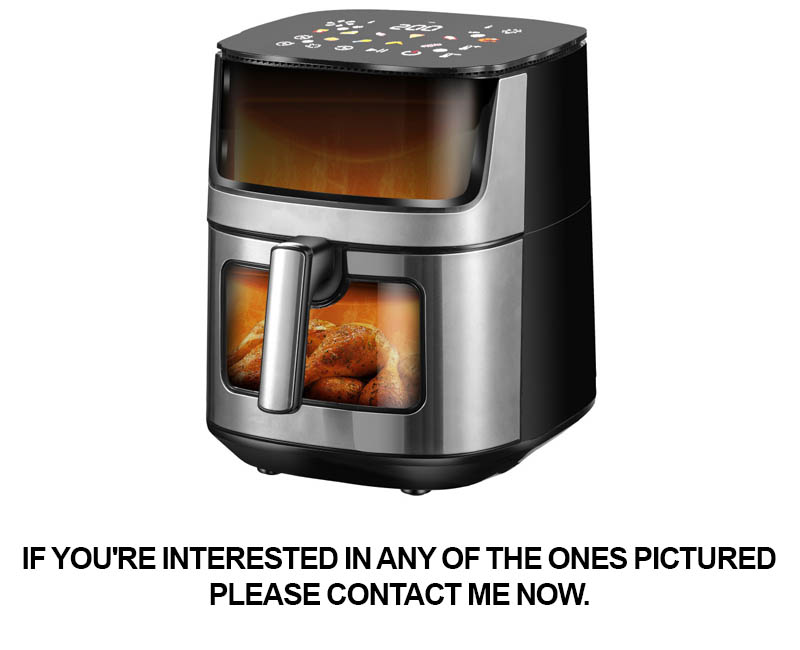
In the ever-evolving landscape of kitchen appliances, several trends are reshaping the industry, offering consumers a blend of convenience, efficiency, and innovation. From smart technology to sustainable designs, here’s a glimpse into the emerging trends that are shaping the future of kitchen appliances.
Smart Integration and ConnectivityThe integration of smart technology in kitchen appliances has become increasingly prevalent. Smart fridges, ovens, and dishwashers are now equipped with Wi-Fi capabilities, allowing users to control and monitor their appliances remotely via smartphones or smart home systems. This connectivity not only enhances convenience but also provides valuable insights into energy consumption and appliance performance.
Energy Efficiency and SustainabilityWith growing environmental concerns, energy efficiency has become a cornerstone in the design of kitchen appliances. Manufacturers are focusing on creating appliances that consume less energy while still delivering optimal performance. This includes advancements in insulation, motor technology, and the use of energy-saving modes. Additionally, the rise of eco-friendly materials and recycling initiatives is making appliances more sustainable throughout their lifecycle.
Personalization and CustomizationModern kitchen appliances are becoming more personalized, catering to individual preferences and needs. From adjustable cooking temperatures in ovens to programmable settings on microwaves, appliances are now designed to adapt to users’ habits. Furthermore, the ability to customize features and functionalities is becoming more accessible, allowing consumers to tailor their appliances to their specific cooking styles and preferences.
Health and Wellness FeaturesAs health consciousness continues to rise, kitchen appliances are incorporating features that support a healthier lifestyle. Induction cooktops, for example, provide a safer and more even cooking surface, reducing the risk of burns and the need for constant stirring. Additionally, appliances with built-in air filtration systems and steam cleaning capabilities are becoming popular for their ability to minimize chemical exposure and maintain a hygienic kitchen environment.
Design and AestheticsThe aesthetic appeal of kitchen appliances is no longer an afterthought. Modern appliances are designed to complement kitchen decor, with sleek lines, minimalist designs, and a variety of finishes. Smart appliances, in particular, are often equipped with touchscreens and digital interfaces that blend seamlessly into the kitchen’s overall look and feel.
Smart Cooking AssistantsAppliances with built-in smart cooking assistants are becoming more sophisticated. These devices can offer recipe suggestions, cooking times, and even adjust settings based on the ingredients used. Some models can even connect to external databases for the latest cooking techniques and culinary trends, making them invaluable tools for both seasoned chefs and culinary novices.
Voice Control and Hands-Free OperationVoice-activated kitchen appliances are becoming increasingly common, thanks to the rise of smart speakers and voice assistants like Amazon Alexa and Google Assistant. Users can now control their appliances with simple voice commands, making hands-free operation a reality. This not only adds convenience but also caters to those with physical limitations or busy hands.
Advanced Cooking TechnologiesInnovative cooking technologies are pushing the boundaries of what’s possible in the kitchen. From sous-vide precision cookers that maintain a consistent temperature for perfect results to air fryers that offer a healthier alternative to traditional frying, these advancements are expanding the culinary possibilities for consumers.
Modular and Flexible AppliancesThe modular design of kitchen appliances is gaining traction, allowing for greater flexibility and adaptability. Modular units can be reconfigured to fit different kitchen layouts and can be easily upgraded or replaced as technology evolves. This approach is particularly appealing in smaller kitchens or for those who prefer a more customizable kitchen experience.
Integration with Home Automation SystemsThe integration of kitchen appliances with home automation systems is another trend that’s on the rise. These appliances can be programmed to work together, optimizing energy use and creating a cohesive smart home experience. From adjusting the lighting to setting the perfect temperature for cooking, the interconnectedness of appliances is enhancing the overall home environment.
As these trends continue to evolve, the kitchen of the future promises to be a place where technology, sustainability, and personalization come together to create a seamless and enjoyable cooking experience.
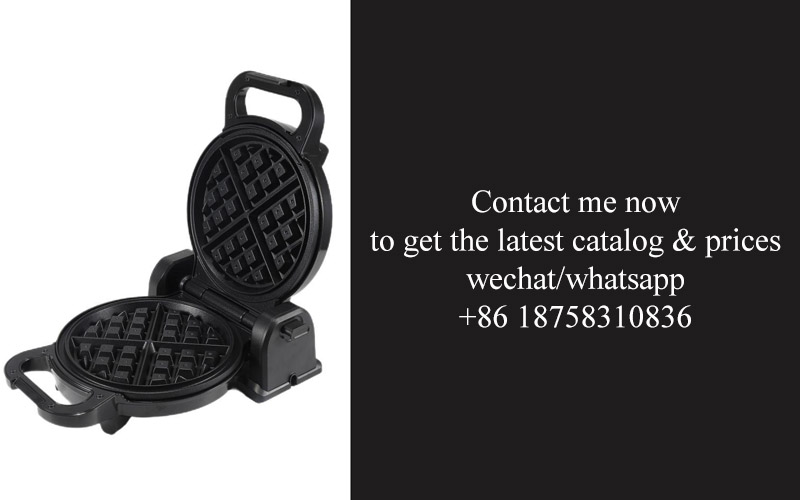
In recent years, the kitchen appliance industry has been witnessing a surge of creativity and innovation, with manufacturers pushing the boundaries of what’s possible in the realm of kitchen technology. Here are some cutting-edge ideas for ETL listed commercial units that are not just ahead of the curve but also meet the stringent safety standards of the ETL certification.
1. Smart Integration for Enhanced EfficiencyOne of the most sought-after features in modern appliances is seamless integration with smart home systems. Imagine a refrigerator that not only keeps your food fresh but also syncs with your smartphone to provide dietary recommendations and track your inventory. ETL listed commercial units could incorporate advanced sensors and AI algorithms to optimize energy usage and reduce waste, ensuring a more efficient and sustainable kitchen environment.
2. Touchless Technology for Sanitary KitchensWith the increasing awareness of hygiene, touchless kitchen appliances are becoming a necessity rather than a luxury. From hands-free faucets to doorbells that open fridge doors, these innovations not only promote a cleaner kitchen but also reduce the spread of germs. ETL certified appliances could be equipped with hygienic features that automatically sanitize surfaces or incorporate anti-microbial materials to maintain the highest standards of cleanliness.
3. Modular and Customizable DesignsThe kitchen is no longer a one-size-fits-all space. Modern kitchens are as diverse as the people who use them. ETL listed commercial units could offer modular designs that allow consumers to customize their appliances according to their specific needs and kitchen layouts. This could include stackable ovens, modular cooktops, and even appliance walls that can be rearranged as lifestyles change.
4. Eco-Friendly and Sustainable MaterialsAs environmental concerns grow, consumers are looking for appliances that are not only energy-efficient but also made with sustainable materials. ETL certified commercial units could embrace eco-friendly designs by using recycled materials, bio-plastics, and renewable energy sources in their manufacturing processes. These appliances could also be designed for easy recycling at the end of their lifespan.
5. Interactive User InterfacesGone are the days of dials and buttons. Modern kitchen appliances are increasingly featuring intuitive, touch-screen interfaces that are both user-friendly and visually appealing. ETL listed units could take this a step further by incorporating augmented reality (AR) to guide users through recipes or maintenance procedures, making kitchen tasks more engaging and accessible.
6. Energy Harvesting AppliancesA forward-thinking idea for ETL listed commercial units is the integration of energy harvesting technology. These appliances could generate their own electricity from ambient sources like heat, motion, or even sunlight. This not only reduces the carbon footprint but also ensures that appliances can operate even in remote or off-grid locations.
7. Personalized Cooking AssistantsThe next generation of kitchen appliances could include personalized cooking assistants that learn your preferences and cooking habits over time. These smart appliances could adjust settings for optimal performance, offering tailored cooking experiences and even providing nutritional analysis and health insights based on your dietary choices.
8. Noiseless OperationNoise can be a significant issue in the kitchen, particularly with large appliances like dishwashers and refrigerators. ETL listed commercial units could be designed with advanced insulation and sound-dampening materials to minimize noise, creating a more pleasant and peaceful kitchen environment.
9. Self-Cleaning CapabilitiesImagine a stove that automatically cleans itself after use or a microwave that sanitizes itself on a regular basis. ETL certified appliances could incorporate self-cleaning technologies that require minimal user intervention, saving time and effort while maintaining a clean kitchen space.
10. Connectivity and Remote MonitoringWith the rise of remote monitoring, ETL listed commercial units could offer features that allow users to control and monitor their appliances from anywhere. This could be particularly useful for monitoring food safety or managing energy consumption while on vacation or away from home for extended periods.
By embracing these innovative ideas, ETL listed commercial units can not only enhance the functionality and convenience of modern kitchens but also contribute to a greener, healthier, and more efficient culinary experience.

The European and American markets for kitchen appliances are distinct in their preferences, technological advancements, and consumer behaviors. Here’s an analysis of the unique dynamics in each region.
In Europe, the emphasis is often on sustainability and energy efficiency. Consumers are increasingly looking for appliances that not only perform well but also have a minimal environmental footprint. Smart appliances with eco-friendly certifications are gaining traction, reflecting a broader societal shift towards greener living. Brands that can offer innovative solutions that align with these values tend to stand out in the competitive landscape.
On the other hand, the United States has a diverse market with a strong focus on innovation and technology. Americans are more willing to invest in premium appliances that offer cutting-edge features, such as voice control, advanced connectivity, and personalized settings. The market is also influenced by the trend towards convenience, with consumers seeking appliances that can integrate seamlessly into their daily routines and save them time.
In Europe, the demand for smart kitchen appliances is growing, with a particular focus on smart refrigerators and ovens. These appliances are equipped with features like Wi-Fi connectivity, allowing users to control them remotely through smartphones or tablets. The ability to monitor food storage conditions or preheat ovens before arriving home is highly appealing to the European consumer, who values both convenience and health.
In the U.S., there’s a surge in interest in kitchen appliances that promote healthy living. For instance, air fryers and induction cooktops have seen a significant increase in popularity. These appliances offer healthier cooking options by reducing oil content and providing precise temperature control, respectively. The American consumer is also drawn to appliances that provide detailed analytics, such as the nutritional content of meals cooked or the energy consumption of various cooking modes.
Another key difference lies in the distribution channels. In Europe, there’s a strong emphasis on traditional retail stores, where consumers prefer to see and touch products before making a purchase. Online sales are growing, but many consumers still prefer the tactile experience of in-store shopping. Conversely, in the U.S., online sales dominate the kitchen appliance market, with major retailers like Amazon offering a vast array of products and competitive pricing.
The European market is also seeing a rise in the popularity of modular kitchen appliances. These units are designed to be customized, allowing consumers to mix and match components to suit their specific needs and kitchen layouts. This flexibility is particularly appealing to those with unique kitchen spaces or those who may need to change their appliances over time.
In the U.S., there’s a significant segment of consumers who are interested in professional-grade appliances for their homes. Brands like Wolf, Viking, and Bertazzoni cater to this market, offering high-performance appliances that are often found in commercial kitchens. This reflects a trend towards “home entertaining” and the desire for top-tier appliances that can handle the demands of frequent hosting.
The European and American markets also differ in their approach to energy regulations. Europe has more stringent energy efficiency standards, which means manufacturers must design their appliances to meet specific energy-saving criteria. In the U.S., while regulations are also in place, the market is more diverse, with a mix of high-efficiency and standard models available.
In conclusion, the European and American perspectives on the kitchen appliance market highlight distinct consumer preferences and technological advancements. European consumers prioritize sustainability and smart functionality, while Americans are drawn to innovation and health-conscious features. Understanding these differences is crucial for manufacturers looking to tap into these dynamic markets and develop products that resonate with their target audiences.
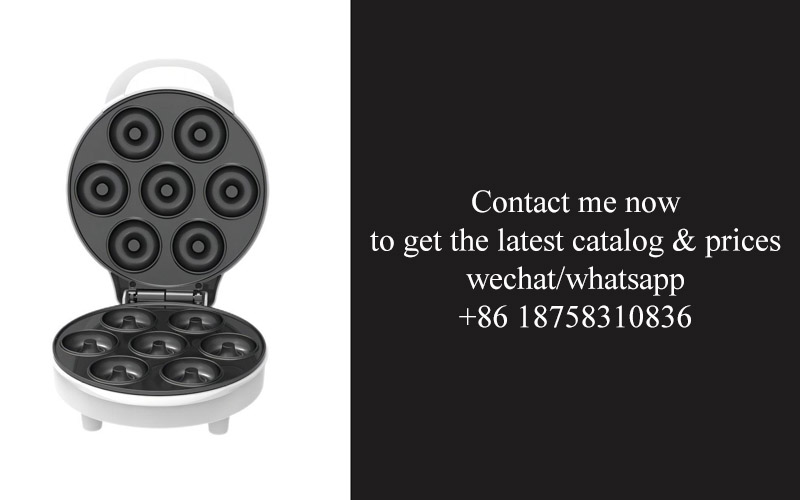
In the ever-evolving landscape of the kitchen appliance industry, data has become a cornerstone for understanding consumer behavior and shaping product development. By delving into the numbers, manufacturers can uncover valuable insights that drive innovation and improve market strategies. Here’s a glimpse into some of the key data-driven insights shaping the industry:
The surge in smart kitchen appliances is undeniable. Sales figures show a consistent increase in the adoption of smart refrigerators, ovens, and dishwashers. Consumers are drawn to the convenience and efficiency these devices offer, with features like voice control, remote monitoring, and predictive maintenance becoming increasingly popular.
Energy efficiency remains a top priority. As environmental concerns grow, so does the demand for appliances that consume less energy. Data indicates that consumers are willing to pay a premium for appliances with high energy ratings, reflecting a broader shift towards sustainability.
Consumer preferences vary significantly across regions. In Europe, there’s a strong preference for compact, multi-functional appliances that save space and offer versatility. Meanwhile, in the United States, there’s a trend towards larger, high-end models that offer advanced features and premium aesthetics. Understanding these regional differences is crucial for manufacturers looking to tailor their products to specific markets.
The rise of online shopping has transformed the appliance buying process. E-commerce platforms have become the go-to source for many consumers, with data revealing a shift in purchasing behavior. Online reviews, product comparisons, and personalized recommendations play a significant role in the decision-making process, making data analytics essential for retailers and manufacturers alike.
Appliance longevity is a key concern. Data shows that consumers are not only interested in the initial cost but also in the long-term performance and durability of their appliances. This has led to a focus on developing products that are built to last, with robust components and reliable performance.
The integration of health and wellness features is on the rise. With an increasing awareness of health and nutrition, appliances that offer functionalities like air filtration, water purification, and even nutritional analysis are becoming more sought after. Data indicates a growing market for these health-conscious appliances.
Customization is becoming more prevalent. Consumers are looking for appliances that can be tailored to their specific needs and preferences. Data-driven insights are enabling manufacturers to offer a wider range of customizable options, from color choices to specific features and settings.
The importance of brand reputation cannot be overstated. Data consistently shows that brand loyalty and reputation are significant factors in appliance purchasing decisions. Consumers are more likely to choose a brand they trust, especially when it comes to high-investment items like kitchen appliances.
The impact of social media and influencer marketing is substantial. Data analytics has made it possible to track the effectiveness of social media campaigns and influencer partnerships. This has allowed appliance manufacturers to optimize their marketing strategies and target their audiences more effectively.
In conclusion, data-driven insights are reshaping the kitchen appliance industry. By analyzing consumer trends, regional preferences, and market dynamics, manufacturers can develop products that meet the evolving needs of their customers. The key is to stay informed and adapt to the data, ensuring that every appliance innovation is backed by meaningful insights and a clear understanding of the market.
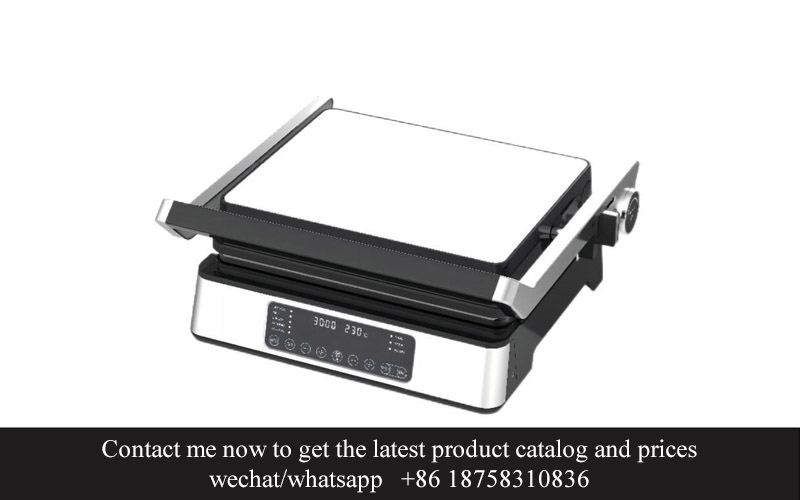
ETL listed appliances are not just a certification; they represent a commitment to quality, safety, and efficiency. Here’s how these appliances benefit consumers:
The peace of mind that comes with ETL certification is invaluable. Consumers can trust that ETL listed appliances meet stringent safety standards, reducing the risk of accidents and fires. This trust is especially crucial in kitchen environments where appliances are in constant use.
Energy efficiency is a top priority for many consumers, and ETL listed appliances are designed to be energy-conscious. These appliances often come with advanced technology that optimizes energy use, leading to lower utility bills and a smaller carbon footprint.
Modern kitchens are no longer just cooking spaces; they are hubs of entertainment and socializing. ETL listed appliances are designed to enhance the user experience with features that make cooking and entertaining more enjoyable. From intuitive interfaces to sleek designs, these appliances are tailored to meet the evolving needs of consumers.
In the age of smart homes, connectivity is key. ETL listed appliances often integrate with home automation systems, allowing users to control and monitor their appliances remotely. This connectivity not only adds convenience but also provides users with the ability to manage their kitchen appliances more efficiently.
Safety features are a hallmark of ETL listed appliances. These include childproof locks, automatic shut-offs, and anti-clog systems, which are particularly beneficial in busy households with children. These features help prevent accidents and protect valuable appliances from damage.
The longevity of ETL listed appliances is another significant benefit. High-quality materials and construction standards ensure that these appliances are built to last. Consumers can expect a longer lifespan from their investments, which translates to cost savings over time.
Health-conscious consumers will appreciate the advancements in kitchen appliances that promote healthier cooking options. ETL listed appliances often come with features like non-stick coatings, steam cooking capabilities, and precise temperature controls, which can lead to healthier meals with fewer fats and oils.
The aesthetic appeal of kitchen appliances cannot be overstated. ETL listed appliances are designed with style in mind, offering a range of colors, finishes, and sizes that can complement any kitchen decor. This not only enhances the visual appeal of the kitchen but also adds value to the home.
For those who are environmentally conscious, ETL listed appliances can be a more sustainable choice. They are often designed with recycling and disposal in mind, featuring components that are easier to dismantle and recycle at the end of their life cycle.
In today’s fast-paced world, the convenience of appliances that can perform multiple tasks is highly valued. ETL listed appliances often come with versatile features that can save time and effort, such as programmable settings, self-cleaning functions, and multifunctional capabilities.
Finally, the value proposition of ETL listed appliances is undeniable. They combine the latest technology, superior quality, and a focus on consumer needs, making them a wise investment for any kitchen. Consumers who choose ETL listed appliances can expect a product that delivers on performance, safety, and style.
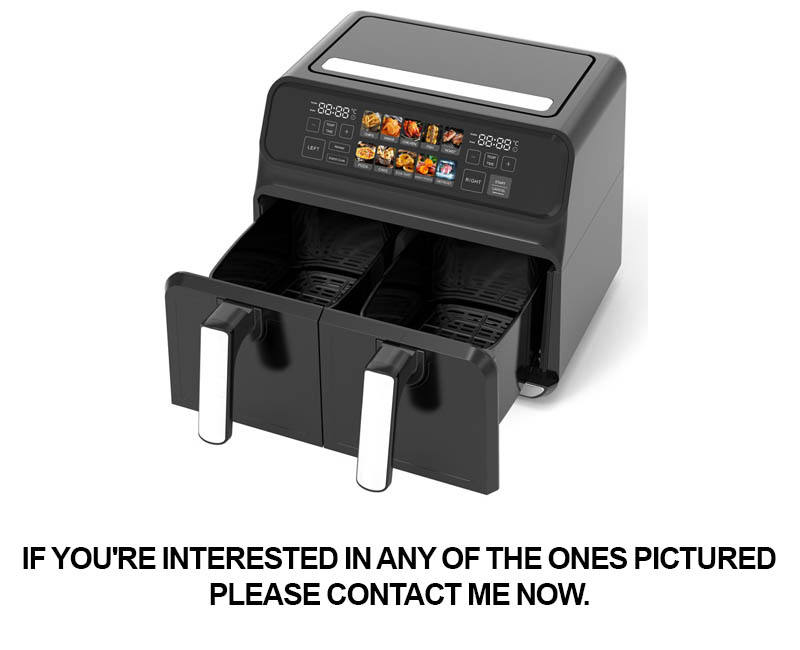
The kitchen, once a realm dominated by basic appliances, has evolved into a hub of innovation and technology. ETL listed commercial units, in particular, have gained a reputation for excellence and reliability. Let’s delve into a few case studies that showcase the success of these units in the marketplace.
The sleek and sophisticated Chef’s Touch series by KitchenCraft has become a standout in commercial kitchens. With its ETL listing, the Chef’s Touch offers precision and durability that meets the stringent demands of professional chefs. The series includes induction cooktops, grills, and ovens that are not only energy-efficient but also easy to clean. One notable success story is a high-end restaurant that replaced their aging gas range with the Chef’s Touch induction cooktop. The restaurant’s management reported a significant reduction in fuel costs and a notable increase in cooking efficiency, making the transition a resounding success.
Another compelling case is the introduction of the ETL listed SmartChef line by appliances giant Electrolux. This collection of smart kitchen gadgets includes a refrigerator that can be controlled remotely, ensuring that perishables are kept at optimal temperatures even when the chef is miles away. A well-known bakery chain adopted the SmartChef refrigerators in their new locations, resulting in less spoilage and happier customers. The data from these installations showed a decrease in waste by 30% and an improvement in customer satisfaction scores.
In the realm of commercial dishwashers, the ProServe line by Hobart stands out. Designed with durability and efficiency in mind, these dishwashers have become a staple in numerous restaurants and catering services. One such instance is a busy hotel that replaced their older dishwasher model with the ProServe series. The hotel’s facilities manager noted a significant drop in water usage and an increase in cleaning capacity, which directly impacted their bottom line. The hotel’s staff also appreciated the ease of operation, which reduced training time for new employees.
The Gourmet Express oven series by Miele has also garnered attention in the gourmet food industry. These ovens, ETL listed for both residential and commercial use, offer a range of features that cater to professional bakers and chefs. A local patisserie owner swapped their traditional ovens for the Gourmet Express models and reported immediate benefits. The even heat distribution and precise temperature control allowed for consistent baking results, which translated into improved product quality and customer loyalty. The data from the patisserie’s sales figures revealed a 20% increase in baked goods sales after the switch.
The integration of technology into kitchen appliances has been a game-changer for the industry. The SmartRange line by Viking, for example, combines the power and performance of a gas range with the convenience of smart technology. A trendy steakhouse that installed the SmartRange reported an increase in customer bookings for their signature dishes. The ability to monitor and control the cooking process remotely, ensuring consistent results, was a major selling point for the establishment. Customer feedback indicated that the steakhouse’s commitment to quality was evident in their perfectly cooked steaks, which was a direct result of the SmartRange technology.
In the world of commercial ventilation, the VentMaster series by Broan-NuTone has made a name for itself. These ETL listed range hoods and fans are not only efficient in removing cooking odors and grease but also come with advanced controls for optimal performance. A chain of upscale restaurants upgraded their ventilation systems to VentMaster, resulting in better air quality and fewer complaints from customers about cooking smells. The data from the restaurant’s surveys showed a 25% improvement in overall customer satisfaction regarding the dining experience.
Each of these case studies highlights how ETL listed commercial units have not only met but exceeded the expectations of users in the kitchen. From enhancing cooking performance to improving operational efficiency and customer satisfaction, these appliances have become integral to the success of various foodservice establishments. The trend of choosing ETL listed units is a testament to the growing trust in quality and safety within the commercial appliance market.
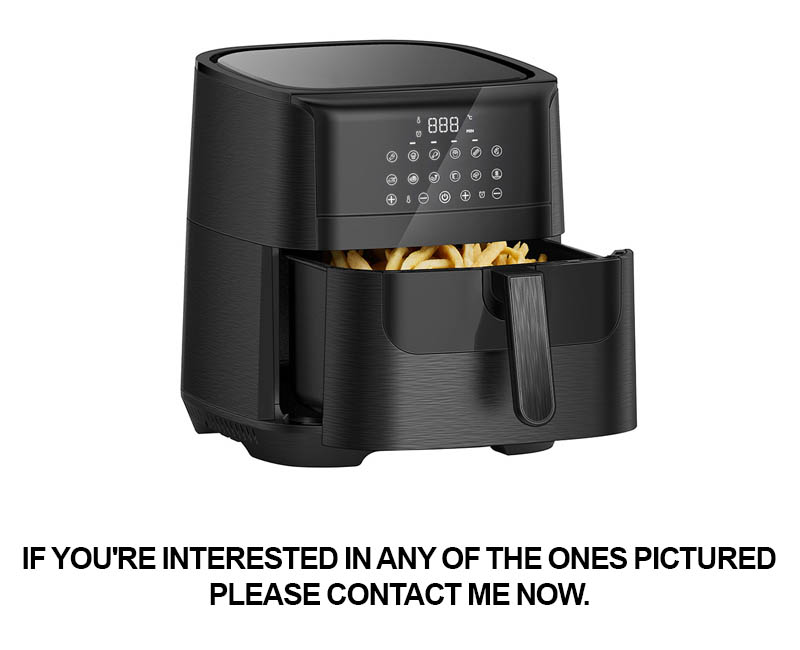
Navigating the complexities of the kitchen appliance industry, manufacturers are constantly seeking ways to innovate and meet the evolving needs of consumers. This pursuit often leads to challenges, but also presents numerous opportunities for growth and innovation. Here’s a closer look at the challenges and opportunities that ETL listed commercial units face.
The competition in the kitchen appliance market is fierce, with numerous brands vying for consumer attention. Standing out requires not just high-quality products but also a deep understanding of market trends and consumer preferences. One significant challenge is the rapid pace of technological advancements, which can render products obsolete within a short span of time. Companies must stay ahead of the curve to ensure their products remain relevant and competitive.
Another challenge is the regulatory landscape. ETL listing is a crucial step for any commercial unit to gain market access, but the certification process can be rigorous and time-consuming. Ensuring compliance with safety standards and energy efficiency requirements is a must, but it also demands a significant investment in resources and expertise.
Despite these challenges, there are abundant opportunities for innovation and expansion. One such opportunity lies in the integration of smart technology. As consumers become more tech-savvy, there’s a growing demand for appliances that can be controlled remotely, offer personalized settings, and provide real-time data on performance and energy consumption. This not only enhances the user experience but also opens up new avenues for data analytics and predictive maintenance.
The rise of sustainability is another opportunity. With environmental concerns at the forefront of public consciousness, there’s a market for appliances that are not only energy-efficient but also made from sustainable materials. This trend is not only beneficial for the planet but can also be a powerful marketing tool, attracting eco-conscious consumers.
Moreover, the rise of the gig economy and remote work has changed the way people use their kitchens. There’s a growing need for compact, multi-functional appliances that can cater to the needs of individuals and small households. This presents an opportunity for manufacturers to design products that are versatile and space-saving, appealing to a new demographic of consumers.
The challenge of product longevity is also an opportunity. As consumers seek appliances that will last, there’s a market for high-quality, durable products that offer long-term value. This requires a focus on design, materials, and manufacturing processes that ensure reliability and longevity.
In the realm of opportunities, the customization of appliances is another area ripe for innovation. Consumers are increasingly looking for products that can be tailored to their specific needs and preferences. This could mean customizable settings, modular designs, or even appliances that can be upgraded or replaced with new features over time.
The global nature of the market also presents opportunities. As companies expand their reach beyond domestic markets, they must adapt to different cultural preferences and regulatory requirements. This can lead to the development of new product lines and the introduction of unique features that cater to specific regional needs.
Lastly, the opportunity for collaboration and partnerships cannot be overstated. By teaming up with other companies, whether it’s for co-branding, shared research and development, or joint marketing efforts, manufacturers can leverage the strengths of multiple entities to create groundbreaking products.
In conclusion, while the kitchen appliance industry faces numerous challenges, from intense competition to stringent regulatory requirements, there are also ample opportunities for growth and innovation. By embracing these challenges and capitalizing on the opportunities, companies can not only survive but thrive in this dynamic and ever-evolving market.

In the evolving landscape of kitchen appliances, ETL listed commercial units stand as a beacon of quality and safety. The future of these units is not just a matter of technological advancement but also of adapting to consumer needs and regulatory standards. Here are some insights into what the future might hold for ETL listed commercial units.
The integration of smart technology is set to become more seamless, with appliances that not only perform their tasks efficiently but also communicate with homeowners to optimize their usage. Imagine a refrigerator that not only keeps your food fresh but also suggests meal plans based on your dietary preferences and the contents of your pantry.
Sustainability will play a pivotal role in the future of ETL listed commercial units. As climate change and environmental concerns grow, appliances that are energy-efficient and use renewable materials will become more popular. The market will likely see a surge in appliances that are designed with the environment in mind, from the materials used to the energy they consume.
Regulatory compliance will continue to be a cornerstone for ETL listed units. As standards evolve, manufacturers will need to ensure that their products meet not just current but also future requirements. This means investing in research and development to stay ahead of the curve, ensuring that ETL listed units remain a symbol of quality and safety.
The rise of personalized kitchen appliances is another trend that’s likely to gain traction. Consumers are increasingly looking for products that cater to their unique needs, whether it’s a countertop oven with adjustable cooking modes or a range that can be customized to fit specific kitchen layouts.
Innovation in kitchen appliances is not just about adding new features; it’s also about improving user experience. Touchscreen interfaces, voice control, and intuitive design will become standard, making appliances more accessible to a wider range of users, including those with disabilities.
The global kitchen appliance market is witnessing a shift towards modular design. This allows consumers to upgrade individual components of their appliances, such as cooktops or refrigerators, rather than replacing the entire unit. This approach not only extends the life of the appliance but also aligns with the principles of sustainability and resource conservation.
As the world becomes more connected, the kitchen will no longer be an island. ETL listed commercial units will be part of a larger ecosystem that includes smart home systems. These appliances will be able to sync with other devices in the home, offering a cohesive and integrated experience that enhances daily life.
The future of ETL listed commercial units also hinges on the ability to adapt to different cultural preferences and cooking styles. This means that appliances will not only cater to the standard European and American markets but also to emerging markets with diverse culinary traditions.
Lastly, the future of ETL listed commercial units will be characterized by a strong emphasis on customer service and support. As technology becomes more complex, manufacturers will need to provide robust after-sales services to ensure customer satisfaction and maintain the integrity of the ETL certification.
In conclusion, the future of ETL listed commercial units is one of continuous innovation, environmental responsibility, and consumer-centric design. It’s a future where appliances are not just tools but companions that enhance our lives in countless ways. As the industry evolves, ETL listed units will remain a hallmark of excellence, bridging the gap between technology and the heart of the home.